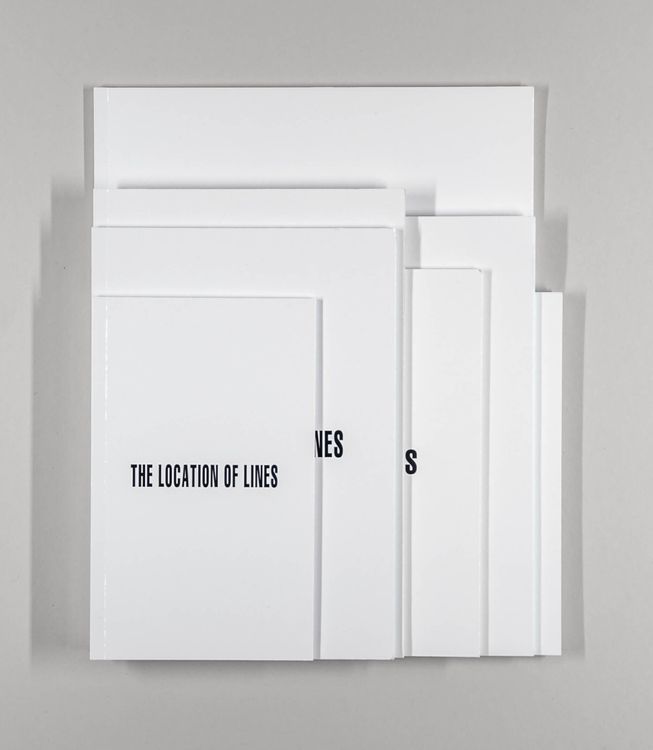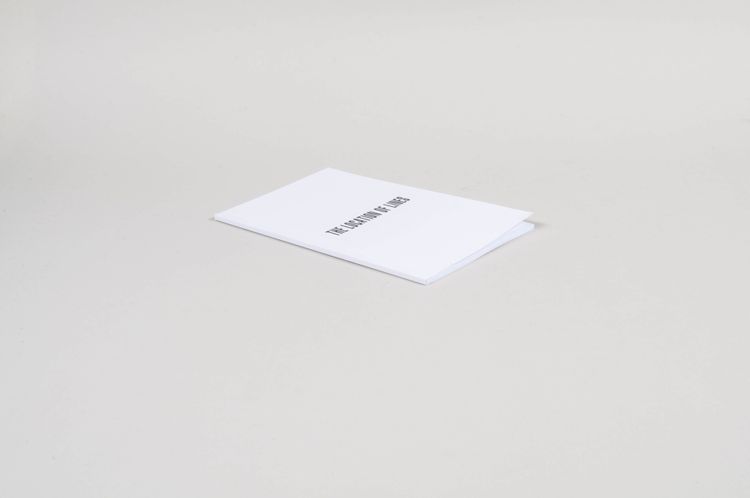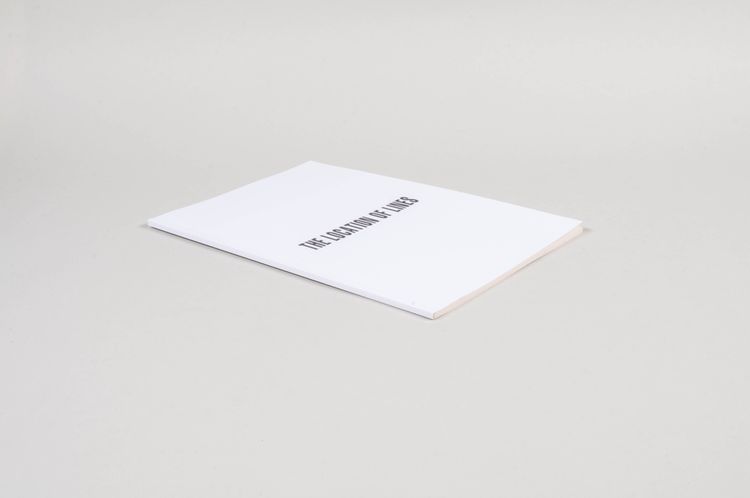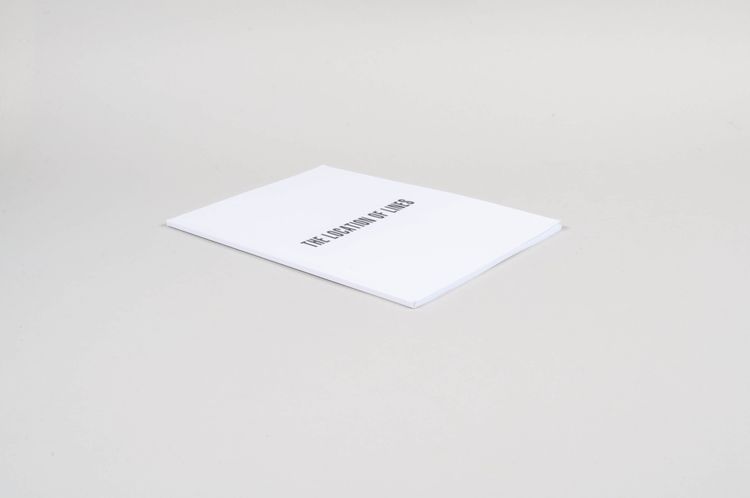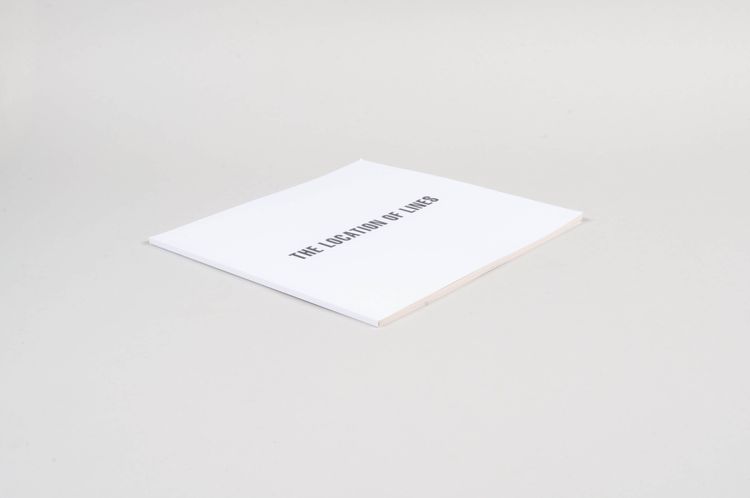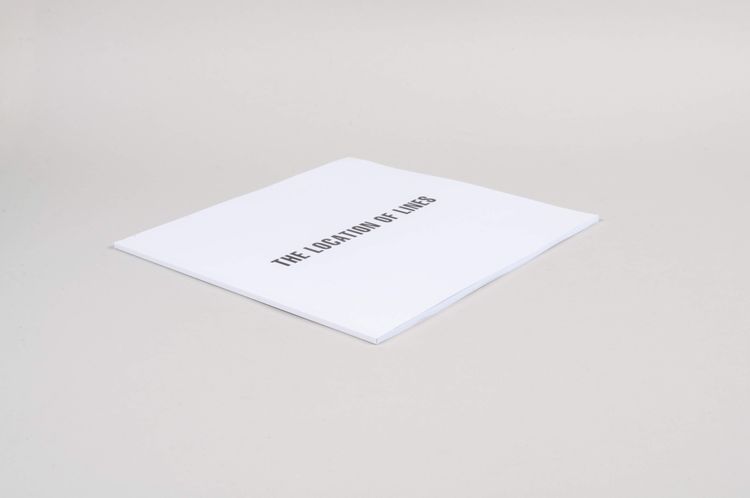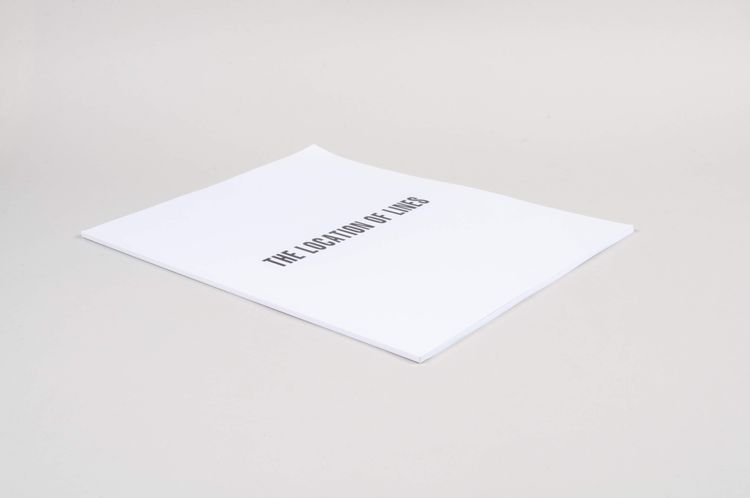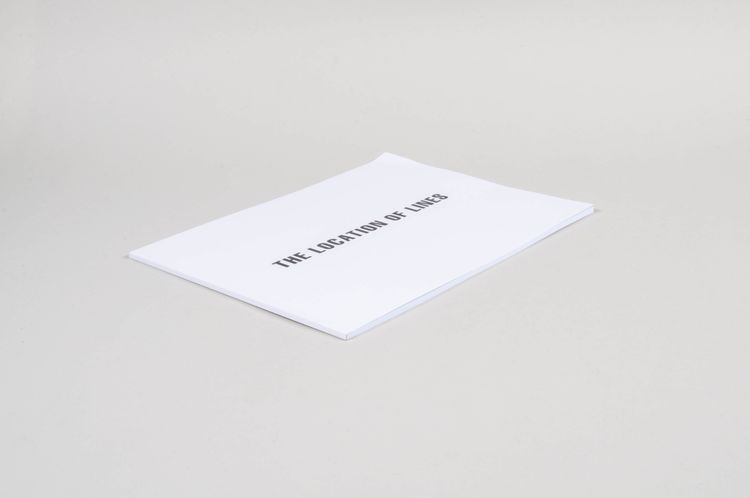This series is part of Eric Doeringer’s Copycat Publications imprint that specializes in artist’s books “after” contemporary artists like Ed Ruscha, John Baldessari, and Sol LeWitt. Here he appropriates LeWitt’s The Location of Lines (1974), in which each double-page spread juxtaposes a line (each positioned differently) with an instruction for how to position it. The first instruction reads, “A line from the midpoint of the left side to the center of the page.” The fact that the text becomes more complex and longer throughout the book shows the irreconcilable medial difference between writing and image.
Doeringer adopts this concept 1:1, but executes it several times on all book formats that Lulu offers as standard. The content is always the same, only the paper and the drawn lines differ, as they have to be adapted to the respective format. This highlights site-specificity as an essential feature of LeWitt’s works, which also characterizes his famous Wall Drawings. These are conceived as works in situ: they likewise exist in the form of instructions that are executed over and over again, in different places, on walls of different sizes and factures, and by different people, with each execution inevitably turning out a little differently: “Each individual, being unique, if given the same instructions would understand them differently and would carry them out differently. […] Even if the same draftsman followed the same plan twice, there would be two different works of art. No one can do the same thing twice” (Sol LeWitt, “Doing Wall Drawings”).
Doeringer congenially transfers this form of variability in the execution of an idea to the medium of the book when he prints the same book in a series of eight different formats. But even all the copies of the same format differ from each other, because in contrast to traditional edition printing, with print-on-demand, each copy is unique. After all, each print job is executed at a different time, on a different press, and potentially at a different production site; inaccuracies, material changes, and production errors are not uncommon.
Therefore, Doeringer’s series does not simply constitute a copy, even if the name of his imprint Copycat might suggest that; he innovatively combines LeWitt’s artistic approach with new reproduction techniques and now brings it to perfection in the printed medium as well. In his “defense,” Doeringer quotes from an interview with LeWitt on his home page: In response to the question “How would you feel if someone executed a wall drawing of yours without permission but with care to follow the instructions and in an appropriate site?,” the latter replies: “OK… It would be authentic [and] it would be a compliment” (Eric Doeringer, website).
Doeringer has produced two other versions: one in US Letter format for the Artists’ Books Cooperative collection AaBbCc and one in DIN A5 format for Antoine Lefevbre's La Bibliotheque Fantastique, an artist-run print-on-demand platform, with the freely downloadable books designed to be printed on a home printer.
Doeringer sells his books via his home page and Lulu as well as in his Etsy store. From the original eight version, only seven are still available in the following dimensions:
- The Location Of Lines (Pocket Format): 10.8 x 17.5 cm / 4.25" x 6.875"
- The Location Of Lines (A5 Format): 14.8 x 21.0 cm / 5.83" x 8.27"
- The Location Of Lines (US Trade Format): 15.2 x 22.9 cm / 6" x 9"
- The Location Of Lines (Small Square Format): 19.0 x 19.0 cm / 7.5" x 7.5"
- The Location Of Lines (Square Format): 21.6 x 21.6 cm / 8.5" x 8.5"
- The Location Of Lines (US Letter Format): 21.6 x 27.9 cm / 8.5" x 11"
- The Location Of Lines (Landscape Format): 22.9 x 17.8 cm / 9" x 7".
